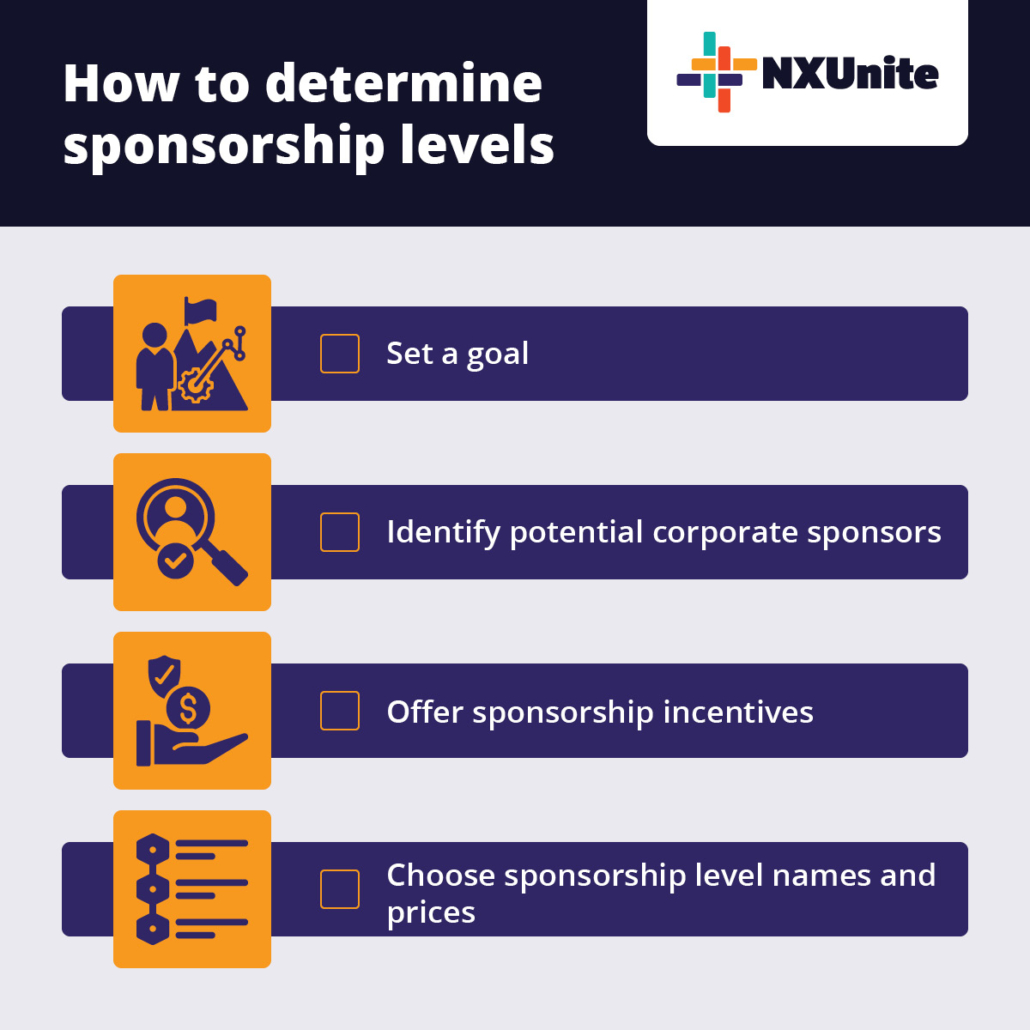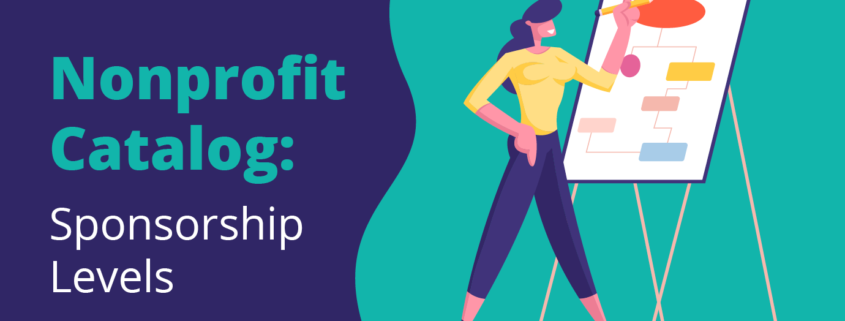Sponsorship Levels – Nonprofit Catalog
Consider the following: you want to host a fundraising event, but you don’t have enough funds to do so. That’s where corporate sponsorships can really help. Partnerships between nonprofits and businesses can help nonprofits increase revenue and get funding for goals and events. Plus, establishing varying sponsorship levels can help you maximize your fundraising.
What are sponsorship levels?
A corporate sponsorship is a type of partnership between a nonprofit and a business, specifically where the nonprofit receives support from the business to continue serving its mission. While this partnership may seem more beneficial for nonprofits, corporations can gain increased name recognition and tax breaks. Furthermore, social responsibility brings businesses positive marketing benefits and improves their reputation among potential customers.
Sponsorship levels are different tiers of corporate sponsorship. These tiers have varying levels of benefits and prices for the corporation.
How to determine sponsorship levels

Setting specific sponsorship levels requires a lot of thought and planning to maximize success. Here are some things you should do while determining sponsorship levels:
Set a goal
What do you want to get out of your sponsorship? Are you looking for sponsorship for a specific fundraising event, such as a hybrid auction or a fun run? Perhaps you’re looking for more funds to reach a specific goal or project. Or maybe, you would like sponsorship for your nonprofit as a whole, to help cover the day-to-day costs and administrative expenses.
Depending on what your goal is, you will want to set different sponsorship levels. A partnership for a fundraising event will probably have fewer benefits and cost less than a longer-term partnership.
Identify potential corporate sponsors
Once you decide what your goal is, you might be tempted to go straight to brainstorming what your sponsorship levels will cost and what the benefits will be. However, researching potential corporate sponsors can help you determine those things.
Consider the following when identifying potential corporate sponsors:
- Relevance. Ask yourself: does your nonprofit’s mission have anything to do with what the corporation is trying to achieve? For example, if you run a soup kitchen that feeds families in need, you may want to consider restaurants as potential sponsors, as they also work in the food industry.
- Company size. The size of the business often has an impact on the amount of money they can offer for sponsorship. A smaller local company won’t be able to afford the sponsorships a major global company will be able to. If you plan on reaching out to local companies, consider offering some cheaper sponsorship options.
- Nonprofit interest. If a corporation has shown interest in social responsibility beforehand, it may be easier to secure a sponsorship from them. Take a look at whether they offer matching gifts or volunteer programs—if they do, it’s a sign that they may be interested in working with nonprofits.
- Event type. If you’re specifically looking to sponsor an event, consider what types of corporations would be interested in that type of event. For example, a local bakery might sponsor a bake sale, and a water bottle company might be interested in sponsoring a fun run.
Doing this research will give you a list of corporations you can directly reach out to. Having a clear idea of the corporations you’re marketing to will help you get a better sense of what benefits to offer. You will also be able to make your sponsorships more targeted and be able to appeal specifically to those corporations.
Offer sponsorship incentives
Although corporate sponsorships are mutually beneficial, you’ll still want to incentivize corporations to sponsor you. That means you must appeal to what corporations want and offer them appropriate benefits. Here are some benefits you can offer:
- Video promo/ad. If your event is in-person, you can show this ad during a lull in the event. You can also place a video ad on your event website.
- Logo on print materials and virtual. Having the business’s logo on your website, banners, and tickets will create more positive brand awareness.
- QR codes/links to their page. Strategically placing QR codes leading to your corporate partner’s website will help drive more traffic to them and may result in increased sales.
- Acknowledgement. This can be in a press release or a part of a speech in person, where you thank your sponsor and acknowledge that the event would not be possible without them.
- VIP event/reception. Offer your corporate sponsors an opportunity to connect with some of your major donors at VIP receptions to help your sponsors with their lead generation.
Evaluate the potential benefits you could offer and which of them would appeal most to the corporations you’re planning on reaching out to. Include those in your sponsorship levels, and include more high-value benefits in your more expensive packages.
Choose sponsorship level names and prices
After you’ve given thought to your goal, your potential corporate sponsors, and what incentives you’ll be offering, decide what your sponsorship levels should be called and what they should cost. You can get creative with your level names and even tie them into what your nonprofit does. For example, if you work for a zoo, you could name your sponsorship levels after animals. The top tier could be “Lion,” the bottom tier could be “Meerkat,” and so on.
Your prices should reflect the thought you’ve put into what corporations you’re targeting. If you are planning on mostly selling to small local corporations, your prices should be lower. Bigger companies will have more money, so you can make your levels more expensive. Reflect on your organization and how much you think your cause is worth to corporations—don’t downsell or upsell.
When done correctly, sponsorship levels can help your nonprofit accomplish objectives that you normally wouldn’t have the funds for. Take the time to do the research and brainstorming to increase your chances of a successful sponsorship.
If you’re interested in other forms of corporate giving, take a look at the resources down below.
Additional Resources
Nonprofit Catalog – Read up on more nonprofit essentials by exploring our Nonprofit Catalog.
Corporate Giving Programs: The Ultimate Fundraising Guide – Interested in corporate giving programs? This guide covers all of the basics.
Corporate Gift Matching Software Can Be A Game Changer For Your CRM – Informing your donors of gift matching opportunities is crucial for fundraising, making gift matching integrations essential for your CRM.


